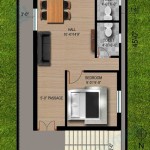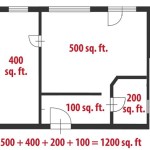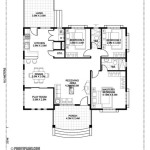Designing and Planning the Perfect House Foundations in Taiwan
Taiwan, with its dynamic geography and susceptibility to earthquakes, necessitates a meticulous approach to designing and planning house foundations. Ensuring a strong, stable base for your home is paramount to its longevity and safety. This article will delve into the key considerations for crafting the perfect house foundations in Taiwan, providing a comprehensive understanding of the process.
Understanding Taiwan's Specific Challenges
Taiwan's unique geological context poses significant challenges for foundation design. The island is situated on the edge of the Eurasian and Philippine tectonic plates, resulting in frequent earthquakes and seismic activity. Additionally, the island's topography is diverse, ranging from flat coastal plains to mountainous terrains. These factors necessitate careful consideration of soil conditions, seismic loads, and potential ground movements when designing foundations.
Soil conditions in Taiwan vary greatly from one location to another. The island's soils are often composed of loose, unconsolidated materials, such as sand, gravel, and clay. These soils may exhibit varying degrees of compressibility and have different bearing capacities. Additionally, the presence of underground water tables and potential liquefaction during earthquakes must be carefully assessed during the foundation design phase.
Another key factor for foundation design in Taiwan is the prevalence of seismic activity. Designing foundations to withstand earthquake forces is crucial for ensuring the safety and structural integrity of buildings. Engineering standards and building codes in Taiwan incorporate specific seismic design requirements to ensure that structures can resist the forces generated by earthquakes.
Key Considerations for Foundation Design
Several crucial considerations come into play when designing foundations for houses in Taiwan. The following points provide a structured approach to ensure a robust and reliable foundation:
1. Site Investigation and Geotechnical Analysis
A comprehensive site investigation is essential to understand the local soil conditions, ground water levels, and potential seismic risks. This involves conducting geotechnical surveys, which include borings, soil testing, and laboratory analyses. These investigations provide crucial data for designing the foundation system.
The geotechnical analyses provide valuable information regarding the bearing capacity of the soil, its compressibility characteristics, and the potential for liquefaction during earthquakes. Based on these analyses, engineers can determine the appropriate foundation type and design parameters to ensure structural stability and safety.
2. Foundation System Selection
The choice of foundation system depends largely on the site conditions, building design, and budget constraints. Common foundation systems used in Taiwan include:
- Shallow Foundations: These include strip footings, isolated footings, and combined footings. They are suitable for light to medium-load buildings on relatively stable soil conditions. These foundations are typically used for smaller houses and residential buildings.
- Deep Foundations: These include piles and caissons, which are suitable for heavy loads or unstable soil conditions. Piles are driven into the ground to transfer the load to deeper, more stable layers of soil. Caissons involve excavating a large hole and filling it with concrete. These foundations are typically used for taller buildings, commercial structures, and large houses.
- Mat Foundations: These consist of a thick, reinforced concrete slab that covers the entire building footprint. They are suitable for buildings with heavy loads or in areas with weak soil conditions. They offer greater stability and distribute the load evenly over a large area.
The selection of the appropriate foundation system requires thorough analysis of the geotechnical data and consideration of the building's structural requirements and architectural design.
3. Seismic Design Considerations
Given Taiwan's seismically active environment, incorporating seismic design principles is crucial in foundation design. This involves:
- Lateral Resistance: Foundations need to be designed to resist seismic forces that can cause lateral movement. This involves incorporating shear walls, diaphragms, and reinforced concrete elements to provide lateral support.
- Damping: Foundation design must be optimized for energy absorption during earthquakes. This can be achieved through the use of flexible connections, isolation systems, and base isolation technologies.
- Ductility: Foundation elements should be designed to deform elastically under earthquake loads and retain their ability to withstand seismic forces without collapsing. This promotes flexibility and resilience in the event of seismic events.
By incorporating these principles, foundation designs can enhance the building's resistance to seismic forces and minimize the risk of damage during earthquakes.
4. Construction Quality and Supervision
The quality of construction and proper supervision are essential for ensuring the integrity and longevity of the foundation. It is crucial to employ experienced and qualified contractors with a proven track record in foundation construction.
Thorough inspection and quality control measures throughout the construction process are essential. This includes verifying the quality of materials, ensuring correct placement and reinforcement of concrete, and monitoring the construction process against the approved engineering drawings and specifications.
Strict adherence to building codes and regulations, coupled with rigorous quality control, ensures that the foundation is built to the highest standards, providing a stable and reliable base for the house.

Cedar Springs Barndominium House Plan Design 4 Bed 3 Bath Double Garage Drawings Blueprints Foundation Electrical Lighting

Affordable Tiny House 18 X 28 Adu In Law Cabin Guest Small Home Plans And Blueprints

What Is Footing Types And Design Method

What Is Footing Types And Design Method

Why Are Floor Plans Important When Building A House Homify

V 345 Ghana Luxury Two Y Tiny Home Plan With Flat Terrace Roof 4 Bed Bath Ibest Ing Modern Simple House Design Deck

Images Homify Com V1515404333 P Photo Image 238060

House Design Ideas With Floor Plans Homify

Pine Bluff House Plan 1400 Square Feet

Most Popular House Plans Of 2024 1600 Sq Ft Ranch Plan Design Basics
Related Posts








